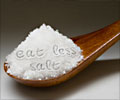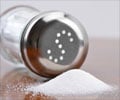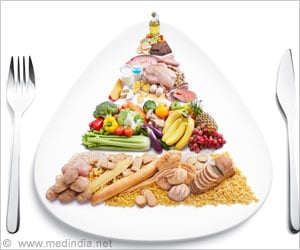According to a recent study published in Hypertension, less sodium in the U.S. diet could save 280,000 to 500,000 lives over 10 years.

Key findings include:
- A gradual reduction in sodium consumption by 40 percent to about 2,200 mg/day over 10 years is projected to save hundreds of thousands of lives – between 280,000 and 500,000 depending on the modeled assumptions.
- About 60 percent more deaths could be averted over this time period if these same reductions could be achieved more quickly (500,000 to 850,000 lives).
Three research groups contributed to the study, each using a different approach for their simulation. One approach used observational cardiovascular outcome follow-up data, while the other two based their projections on established evidence that salt reduction lowers blood pressure. These two groups inferred the cardiovascular effects of reducing sodium from data about the relationship of blood pressure to cardiovascular disease.
"The research groups used the same target populations and baseline death rates for each projection, and our study found that the different sources of evidence for the cardiovascular effects of sodium led to similar projected outcomes," said Pamela Coxson, Ph.D., lead author of the study and a mathematics specialist in the department of medicine at the University of California San Francisco (UCSF).
"It is helpful when three research groups use different approaches and come up with similar results," said Kirsten Bibbins-Domingo, Ph.D, M.D., senior author of the study and associate professor of medicine at UCSF and director of the UCSF Center for Vulnerable Populations.
The three approaches included a gradual reduction of sodium by 40 percent; instant reduction of sodium by 40 percent or instant reduction of sodium to no more than 1500 mg/day. According to the researchers, only the first scenario — gradual population-wide reduction of sodium by 40 percent over ten years — is a potentially achievable public health goal.
Advertisement
Excessive sodium intake contributes to high blood pressure, which increases the risk of heart attacks, strokes and other cardiovascular diseases. In the U.S, cardiovascular disease is the leading cause of death, and nearly half of these deaths are related to high blood pressure.
Advertisement
"Such gradual reductions could be achieved through a combination of consumer education and food labeling, but should likely also include regulation to assure that lower sodium options are available for US consumers," said Bibbins-Domingo.
The American Heart Association recommends consuming less than 1,500 mg of sodium daily, and has called on the Food and Drug Administration to lower the daily value for sodium and set limits on the amount of sodium foods can contain. The association also favors robust sodium standards for foods served in schools and purchased by governments and encourages the food industry to make meaningful efforts at reducing sodium which would provide consumers with greater choice in foods and a healthier overall food environment. There are a number of healthy recipes and tips for helping you reduce salt in your diet.
Source-Eurekalert











